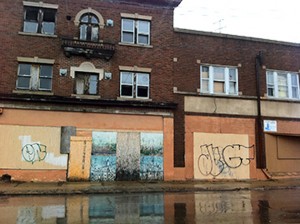
Writer Ginger Strand penned an entirely different view of Niagara Falls than the elected officials described.
In our effort to see Niagara Falls as others see it, we’ve examined both the statistical rankings that regularly appear on internet websites devoted to such things and the views of community leaders whose livelihoods largely depend on making people think things are good or at least getting better (See related stories).
But to get the full picture, one must peruse the literature. That is, the depictions of our fair city that have appeared in the accredited, mainstream media, as reported by writers of solid credentials.
What we find is not pretty. Word pictures of a desolate and devastated landscape are common.
“Today, the city appears almost to be a shell,” wrote Mark Hughes in the London Telegraph. “The streets are lined with boarded-up shops and derelict houses. Bars and restaurants are few and far between. Some neighborhoods are nearly empty.”
Some have called the city a poster child for the decline of the Rust Belt in general.
“Once a hydropowered center of industry, Niagara Falls is now one of America’s most infamous victims of urban decay, hollowed out by four decades of job loss, mafia infiltration, political corruption, and failed get-fixed-quick schemes,” read an article in Bloomberg Businessweek.
Ginger Strand, author of Inventing Niagara: Beauty, Power, and Lies, called the place ‘a history in miniature of wrongheaded ideas about urban renewal.”
“Niagara Falls, New York, is by general agreement a mess. The river above the Falls is lined with factories, many of them shuttered. Almost half the population and more than half the jobs have decamped since 1960, and it shows,” Strand wrote. “Housing stock is crumbling, and the center city is a study in urban decay: empty lots, boarded-up businesses, foreclosure signs. The roads are potholed, the sidewalks cracked. Someone’s usually pushing a shopping cart down the street. The area around the Falls is a jumble of failed attempts at urban renewal — a bankrupt mall, a foreclosed Native American museum, a shoddy row of cheap attractions, handmade signs and pushcarts selling samosas and souvenir sweatshirts.
“If you can figure out which way the riverfront is, you’ll notice the view is blocked by a giant parking ramp and a smattering of hotels, not fancy ones, but the kind that try to temper their bland mediocrity with the word ‘inn.’ Days Inn. Comfort Inn. Quality Inn,” she concludes.
The shocking reality of conditions here stuns vacationers, according to an article in the online magazine Governing.
“Whatever visitors imagine they’ll find in Niagara Falls, New York, the reality is coarser. The Falls themselves remain a gem… but the rest of the city could be Detroit or Gary–an industrial town long past its heyday and shackled by its economic and political history,” the article states. “Beyond downtown stretch miles of chemical plants, some in use and others abandoned. Cracked and potholed streets lead to neighborhoods with houses that are shabby and overgrown or obviously deserted, blighted reminders that the city’s population is half what it was a few decades ago.”
Clearly, as seen through the eyes of trained journalists from around the world, Niagara Falls is not the city on the move so often depicted by leaders such as Mayor Paul Dyster, Councilwoman Kristen Grandinetti, Gov. Andrew Cuomo and Sen. Charles Schumer.
That objectivity is one reason we have trained journalists. To help us see ourselves as others see us.





















